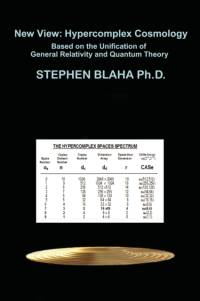Om New View
The author introduced the first hypercomplex number based theory for symmetries and particles in January, 2020. Since then he developed a comprehensive theory described in a number of books that became Octonion Cosmology. Octonion Cosmology was based on spinor spaces. In the past few months the author has developed a new theory: Hypercomplex Cosmology (HC) based on the CASe groups within GiFT that are associated with spaces of creation/annihilation operators in PseudoQuantum Field Theory.HC has a better set of 10 spaces and a more transparent derivation of their properties. It accounts for the known form of the Standard Model exactly without any ad hoc choice of symmetries. It generalizes the Standard Model to the Unified SuperStandard Theory (UST) theory with 256 fundamental fermions and a large set of Internal Symmetries in a 256 dimension space containing their irreducible representations. HC generates universes in "sister" pairs through fermion-antifermion annihilation.Quantum theory is based on quantum fields, which contain creation/annihilation operators. These operators undergo General Relativistic transformations that generate spaces containing particles and symmetries. The dynamics of the particles and symmetries are governed by a Riemann-Christoffel curvature tensor. General Relativity appears in the dynamics. The unification of Quantum Theory and General Relativity is completed by the combination of space-time dimensions and internal symmetry representation dimensions in a dimension array in each HC space.. HC also supports a simpler formulation of quantum scalar and fermion space fields. HC determines the exact known particles and symmetries of the Standard Model and adds more to form a complete unified theory. In particular, it uses CASe su(1, 1) symmetry to define a two-time coordinate system for a Fundamental Reference Frame. This coordinate system directly implies the Standard Model symmetries and the form of their fermion spectrum. Among other advantages, HC General Relativistic transformations map the known fermion and symmetry structure to a much reduced number of fermions and symmetries - a one generation Standard Model in a non-static reference frame called the Fundamental Frame by the author. The number of space-time dimensions in a space, the total number of internal symmetry dimensions of a space, and the number of fundamental fermions of the space's Fundamental Frame are linked thus supporting the reality of the Fundamental Frame.The ten Hypercomplex Cosmology spaces depicted on the cover remind the author of the Bohr Theory hydrogen energy levels that preceded Quantum Mechanics. The author believes there is a deeper theory beneath HC that remains to be found.
Visa mer

